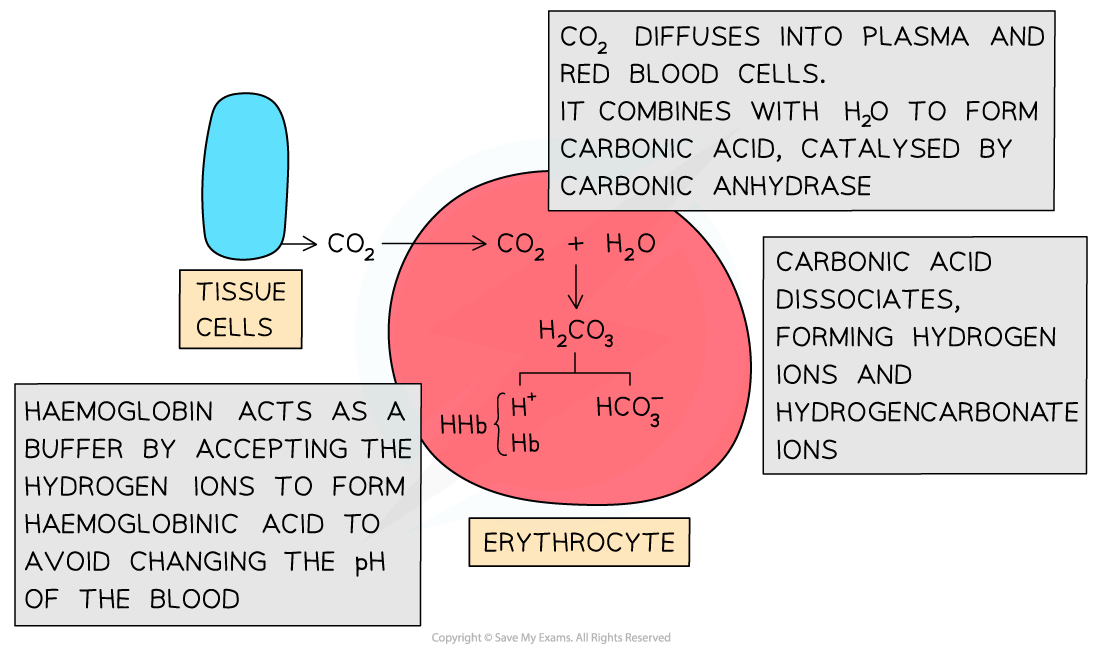Plasma & Carbon Dioxide (Cambridge (CIE) A Level Biology): Revision Note
Exam code: 9700
Plasma & carbon dioxide
Waste carbon dioxide produced during respiration diffuses from the tissues into the blood
This waste carbon dioxide is transported around the body in different ways:
Around 5 % of carbon dioxide dissolves directly in the blood plasma
Around 10 % of carbon dioxide is bound to haemoglobin as carbaminohaemoglobin
Around 85 % of carbon dioxide is found in the blood plasma in the form of hydrogen carbonate ions (HCO3-)
Carbon dioxide in the plasma
Carbon dioxide released as a waste product from respiring cells diffuses into the cytoplasm of red blood cells
Inside red blood cells, carbon dioxide combines with water to form carbonic acid (H2CO3)
CO2 + H2O ⇌ H2CO3
Red blood cells contain the enzyme carbonic anhydrase which catalyses the reaction between carbon dioxide and water
Without carbonic anhydrase this reaction proceeds very slowly
The plasma contains very little carbonic anhydrase hence H2CO3 forms more slowly in plasma than in the cytoplasm of red blood cells
Carbonic acid dissociates readily into hydrogen ions (H+) and hydrogen carbonate ions (HCO3-)
H2CO3 ⇌ HCO3– + H+
Hydrogen ions can combine with haemoglobin, forming haemoglobinic acid and preventing the H+ ions from lowering the pH of the red blood cell
Haemoglobin is said to act as a buffer in this situation
The hydrogen carbonate ions diffuse out of the red blood cells into the plasma to be transported in solution

Worked Example
Explain how carbon dioxide is transported in the form of hydrogen carbonate ions.
Carbon dioxide diffuses down a concentration gradient from respiring cells into the plasma, and diffuses again into red blood cells
In the red blood cells some carbon dioxide combines with water to form carbonic acid, in a reaction catalysed by the enzyme carbonic anhydrase
Carbonic acid dissociates to form hydrogen carbonate ions and hydrogen ions
The hydrogen carbonate ions diffuse out of the red blood cells into the plasma, where they are transported to the lungs

Unlock more, it's free!
Did this page help you?